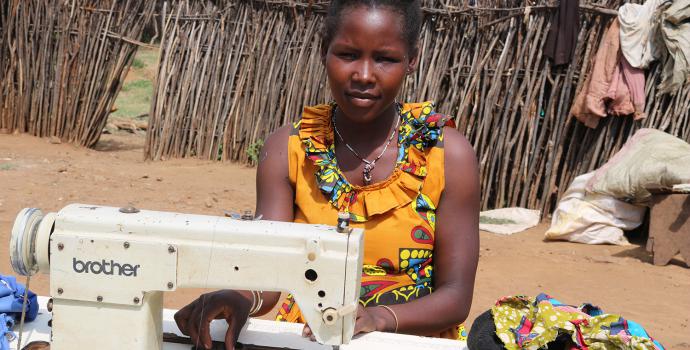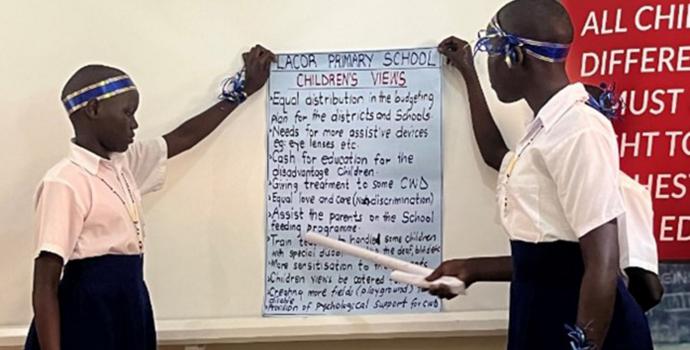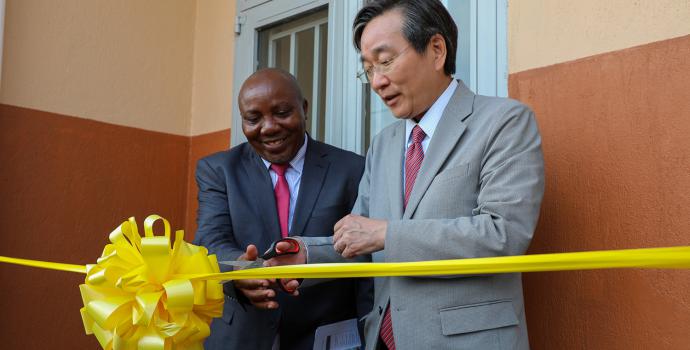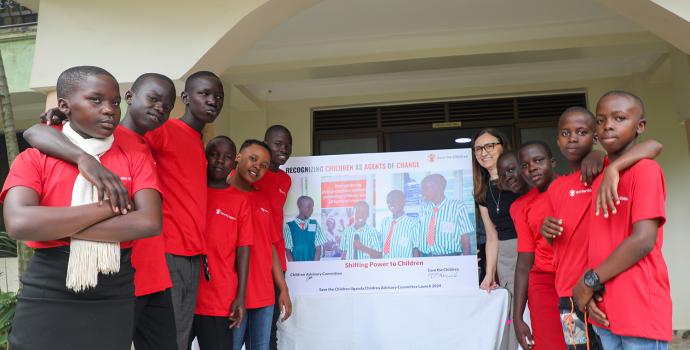World health worker week: We have supported over 100 health facilities during COVID-19 pandemic
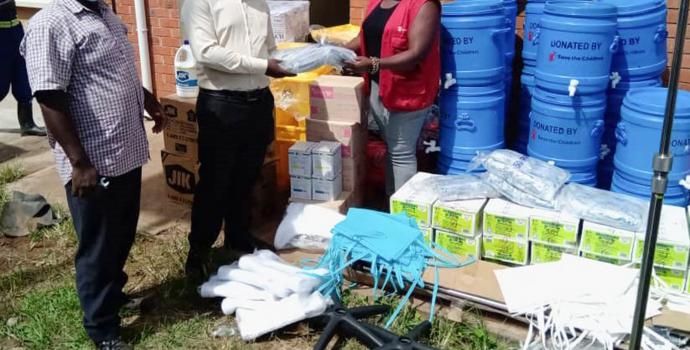
Handing over handwashing supplies and Personal Protective Equipment to the COVID-19 district taskforce in West Nile, Uganda.
Health workers are at the backbone of our support for children in Uganda. As we commemorate World Health Workers week this year, we remember that it happens at the time the world is facing the global COVID-19 pandemic which has caused disruptions in critical health and nutrition services thereby threatening children’s right to survival.
Our health workers are at the forefront of the COVID-19 response. They have been supporting health facilities with protective equipment but also present to allow the continuity of other health services.
Dr Lorna Muhirwe, the Head of Health at Save the Children, says,“The COVID-19 pandemic disrupted provision of health services to children and women because of the barriers that were created to curtail its spread.”
However, Save the Children, was alive to this fact and could not abandon the people we serve at such a critical time.
“We made a decision not to close down our essential health services such as immunisation, maternal clinics, young child clinics which specialize in treatment of illnesses among children. And we made some adaptations. For instance, we relocated our health workers to the facility compounds by constructing temporary structures and took take care of their health concerns such as giving them personal protective equipment,” she said.
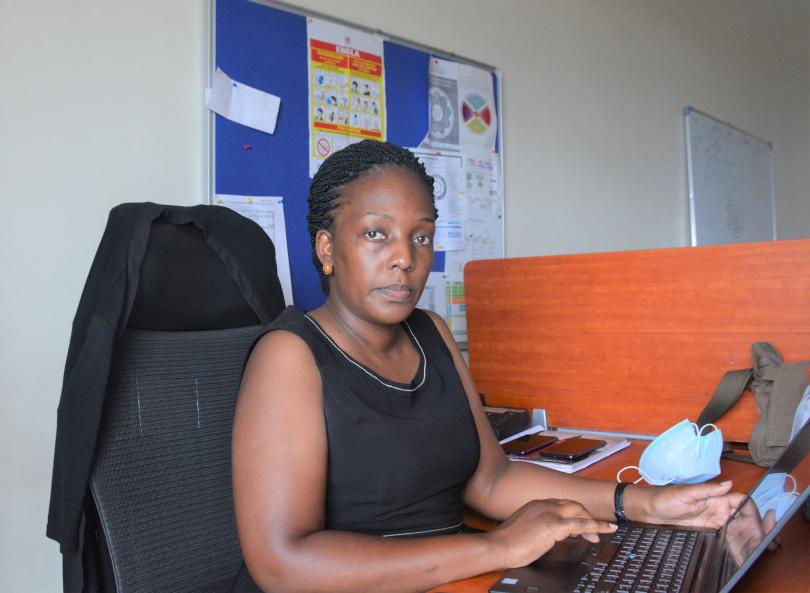
Dr Lorna Muhirwe says Save the Children delivered health services to the people despite COVID-19 pandemic.
Save the Children recognises the role of government in protecting its citizens and according to Dr Muhirwe, we supported government facilities in which we work with face masks, sanitisers, handwashing facilities to ensure that health workers remained protected.
With restrictions in public gatherings and transportation, it was no longer easy to conduct massive health outreaches in communities. However, Dr Muhirwe says, Save the Children worked with Village Health Teams to mobilise smaller numbers and in so doing maintained our outreaches.
“We were also able to get transportation waivers through working with local authorities and in fact our village ambulances continued working,” she adds.
At the start of the pandemic, health workers did not know a lot about COVID-19 and Save the Children took the initiative to create awareness.
“We, therefore, supported Ministry of Health to train workers in infection prevention and control,” she says.
In the end, we were able to build confidence of health workers in responding to the disease and the patients in knowing that the facilities are safe and there are adequate supplies to respond to their health needs.
And for Harriet Kusiima, the Save the Children Pharmacy technician, delivering health supplies for the people we serve is a topmost priority.
“I love it when facilities are well stocked, and patients walk in and leave with treatment as opposed to being sent to other facilities to buy the drugs. I, therefore, make sure services are always available. I efficiently monitor dispensers, nurses and how they handle medicines. I am also always at the top of our drug stock which we have in store and ensure it is being properly handled,” she says.
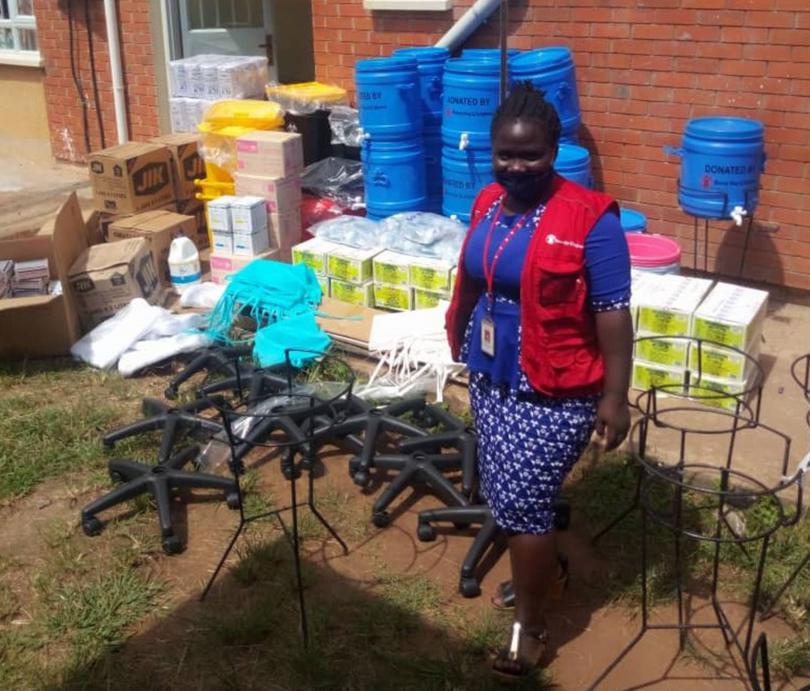
Harriet Kusiima delivers protective facilities for health centres.
To date, Save the Children health teams continue to deliver for children in more than 80 facilities across Uganda while calling the population to continue coming for health services. For instance, in Wakiso District in Central Uganda, Save the Children team, redesigned messages on health promotion to include continuous access to health services such as calling on parents to take children for immunisation.
And on World Health Workers week we celebrate their efforts in delivering the much-needed change for children.
Health facilities supported during COVID-19 lockdown
A total of 113 health facilities have been supported. Sixty-two of these included Save the Children program-supported and the rest non-program supported health facilities in SCI regions of operation.
The support included:
- Personal Protective Equipment (PPE) & IPC materials for frontline health teams.
- District Rapid Response teams in high burden/high risk districts were provided with PPE kits to facilitate surveillance, contact tracing and sample collection.
- Initial trainings of health workers to address knowledge and skills in case management. With support from Save the Children, Ministry of Health reached a total of 800 healthcare workers through training to increase awareness and readiness to respond to COVID 19.
- Provided support to the Ministry of Health case management pillar to facilitate web-based training for health workers.

